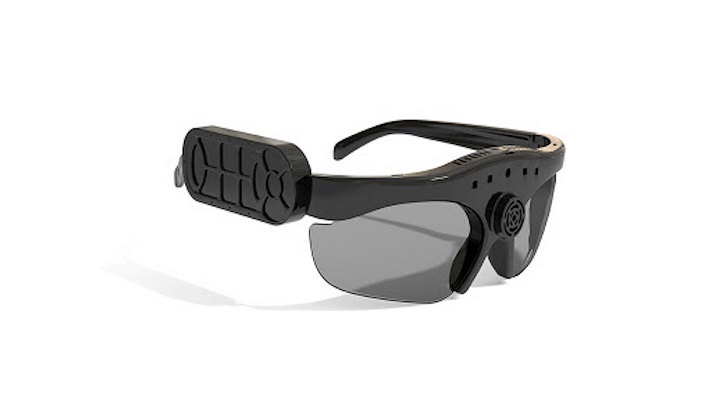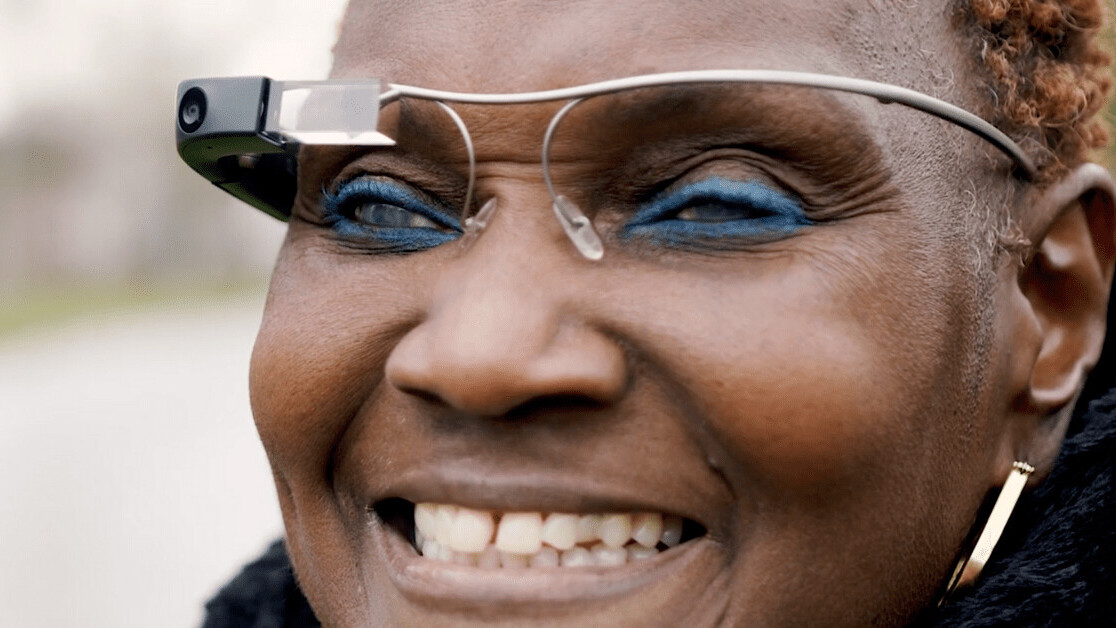Cutting-edge Solutions in Assistive Modern Technology for Visual Impairment
The landscape of assistive modern technology for visual impairment is advancing quickly, providing a variety of innovative remedies that boost availability and independence. From sophisticated smart device applications that help with navigation to wearable tools developed for real-time guidance, these devices are improving the experiences of those with aesthetic disabilities.
Developments in Smartphone Applications
Over the last few years, advancements in smartphone applications have actually dramatically changed the landscape of assistive technology for people with aesthetic problems. These applications utilize the effective sensors and abilities of modern smart devices to offer customers with tools that improve freedom and availability in their day-to-day lives.
Noteworthy amongst these advancements are applications developed for things recognition, which use the smartphone's electronic camera to determine items and offer verbal summaries. Such functions encourage users to browse their settings much more effectively, whether recognizing products in shops or finding individual valuables in your home. In addition, text-to-speech applications have enhanced dramatically, making it possible for customers to record printed message with their gadget's electronic camera and get split second audio feedback, thereby facilitating analysis and understanding.
Navigating applications customized for visually impaired individuals have actually likewise arised, offering auditory advice and comprehensive location information. These devices provide crucial support for wheelchair, enabling individuals to pass through unfamiliar spaces with self-confidence. Community-driven applications have fostered social communication and source sharing among individuals with visual impairments, producing a helpful network that improves their high quality of life. Generally, smart device applications have actually come to be indispensable allies in advertising autonomy and accessibility for people with aesthetic problems.
Wearable Tools for Navigation
Wearable devices for navigation have actually become a groundbreaking option for people with visual impairments, offering hands-free assistance that boosts wheelchair and positioning. These devices typically make use of innovative innovations, consisting of GPS, ultrasonic sensors, and expert system, to give real-time feedback and direction to individuals as they navigate their setting.
One remarkable instance of wearable navigating innovation is clever glasses, which can identify barriers and relay auditory or haptic comments to the user, permitting reliable and risk-free activity in different setups. Other devices, such as belts and vests furnished with sensors, can likewise inform individuals of their surroundings by supplying signals regarding close-by things or modifications in surface.
In addition, many wearable devices integrate with mobile phone applications, making it possible for customers to tailor their navigating choices and receive customized course ideas. This customization can considerably boost the user experience, empowering people to take a trip with greater self-confidence and self-reliance.
As innovation remains to develop, the capacity for wearable navigating devices to boost the lifestyle for individuals with aesthetic disabilities stays substantial, leading the way for even more comprehensive and accessible environments.
Smart Home Technology Combination

Moreover, wise home appliances outfitted with tactile interfaces or auditory comments give intuitive interactions that cater particularly to the demands of those with aesthetic impairments. For instance, wise fridges can introduce their materials and expiration days, while clever stoves can guide users via the cooking procedure with audio guidelines.
Home automation systems, such as smart buzzers and protection electronic cameras, supply satisfaction by enabling customers to receive informs and accessibility live feeds by means of their smart phones, enhancing individual safety (AI-powered visual aids). Additionally, integration with tablets and smart devices makes certain that customers look these up can handle their home setting from anywhere within their facilities
As wise home modern technology remains to develop, it holds the prospective to change the living experiences of individuals with visual disabilities, cultivating self-reliance and improving lifestyle in a significantly connected world.

Educational Equipment and Resources
Accessibility to reliable educational tools and sources is crucial for individuals with visual disabilities, as it equips them to involve totally in their learning experiences. Various assistive technologies have been established to improve availability and foster independent learning. Screen visitors, for instance, convert text into speech, enabling trainees to gain access to digital content effortlessly. AI-powered visual aids. In addition, refreshable braille screens give responsive responses, making it less complicated for students to connect with created product.
In addition, instructional software application especially created for aesthetically damaged users offers attributes such as high-contrast settings and customizable text dimensions. These tools accommodate varied discovering styles and guarantee that trainees can customize their educational experience to their needs.
Furthermore, access to electronic collections and audio books increases the variety of available learning products, allowing students to check out subjects in deepness without the restrictions imposed by standard print sources. Collective platforms that include ease of access features additionally help with team jobs, ensuring that aesthetically impaired trainees can contribute meaningfully together with their peers.
Community Assistance and Engagement
A durable network of community support and engagement is company website essential for people with aesthetic disabilities, cultivating an inclusive setting where they can flourish. Area organizations, regional campaigning for groups, and volunteers play a crucial role in supplying resources, info, and companionship, which are essential for boosting the lifestyle for those influenced by visual problems.
Interaction activities such as workshops, social events, and support system not only facilitate skill development but also promote social interaction, reducing sensations of seclusion. These efforts motivate individuals to share experiences, successes, and obstacles, thereby reinforcing neighborhood bonds. Additionally, collaborations with neighborhood services can result in better access in public areas, even more incorporating people with visual impairments right into the neighborhood.
Technology additionally improves community engagement through on-line systems that provide virtual assistance teams and resources, enabling individuals to link no matter geographical obstacles. By utilizing both electronic and in-person solutions, neighborhoods can create a detailed support network. Ultimately, fostering collaboration among numerous stakeholders-- including family members, teachers, and medical care specialists-- makes certain that individuals with aesthetic problems get the all natural assistance required to browse life effectively and with dignity.
Final Thought
Innovative remedies in assistive innovation for aesthetic disability considerably boost the high quality of life for people facing these difficulties. The integration of mobile phone applications, wearable devices, wise home modern technology, and educational tools promotes better independence and ease of access. Area support and engagement additional equip aesthetically impaired individuals, promoting inclusivity and involvement in different facets of life. Jointly, these developments not only change daily experiences yet also pave the way for a much more fair culture.
The landscape of assistive modern technology for aesthetic problems is progressing quickly, providing a variety of ingenious options that improve availability and self-reliance. Community-driven applications have fostered social interaction and source sharing amongst individuals with visual impairments, creating an encouraging network that boosts their high quality of life. In general, smartphone applications have actually come to be indispensable allies in advertising freedom and ease of access for individuals with aesthetic disabilities.
Numerous individuals with aesthetic disabilities are finding better freedom through the integration of clever home technology.Innovative solutions in assistive modern technology for aesthetic impairment significantly boost the high quality of life for individuals encountering these difficulties.